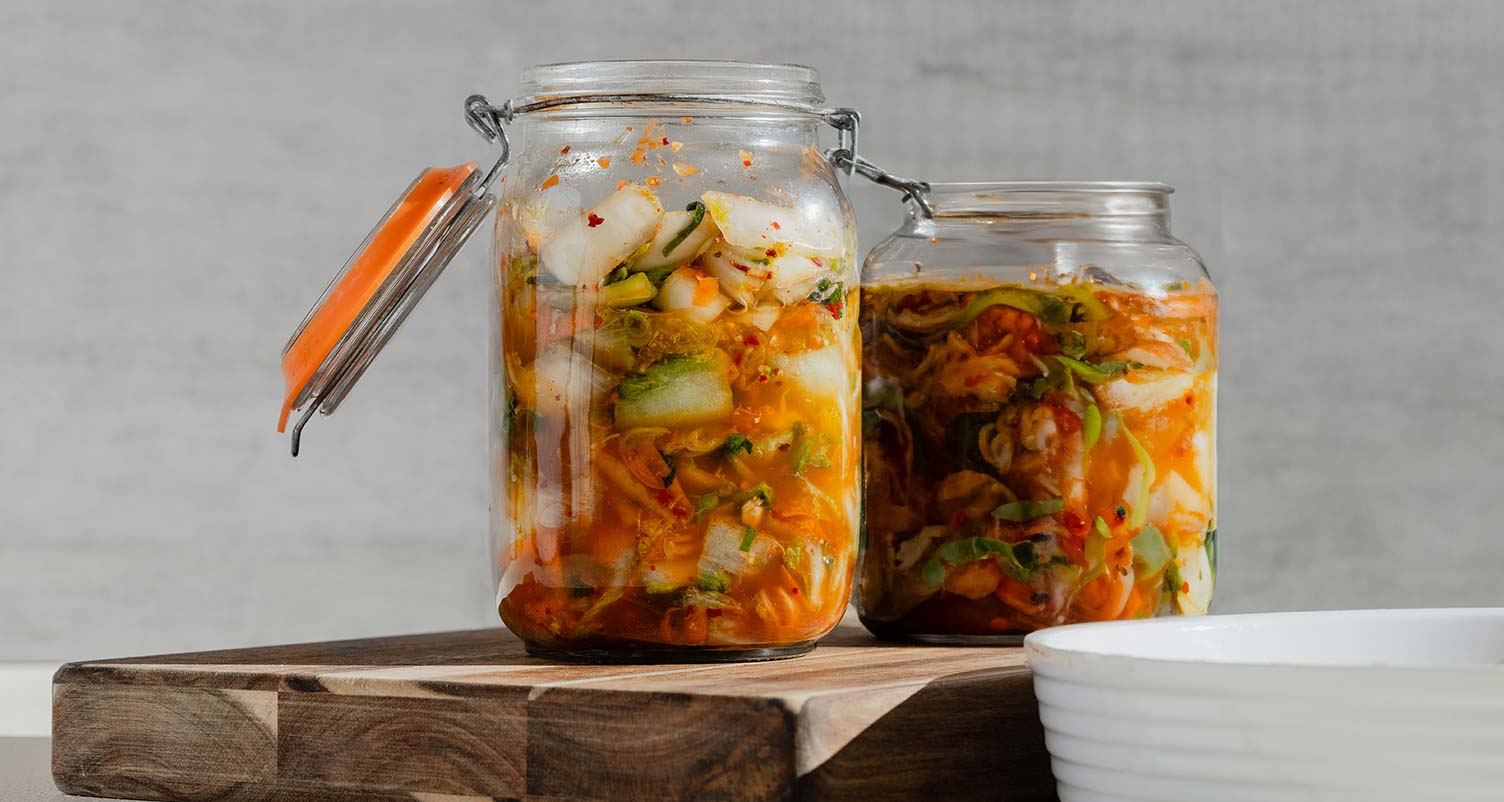

Articles
How To Store Kimchi Without Fridge
Modified: August 27, 2024
Learn effective ways to store kimchi without a fridge in this informative article. Discover tips and tricks to preserve the freshness and flavor of your homemade kimchi.
(Many of the links in this article redirect to a specific reviewed product. Your purchase of these products through affiliate links helps to generate commission for Storables.com, at no extra cost. Learn more)
Introduction
Kimchi is a popular Korean side dish made from fermented vegetables, such as cabbage and radishes, combined with a flavorful mixture of spices and seasonings. It’s known for its unique tangy and spicy taste, as well as its numerous health benefits. Traditionally, kimchi is stored in large ceramic jars, buried underground, and left to ferment for months. However, modern times call for modern solutions, and many people find themselves without the luxury of a traditional fermentation setup or enough fridge space to store their kimchi.
So, what do you do if you want to store kimchi but don’t have a fridge? Don’t worry, there are several alternative methods that you can try. In this article, we will explore different ways to store kimchi without a fridge, ensuring that you can enjoy this delicious dish while preserving its flavor and quality.
Before we dive into the various storage methods, let’s take a look at why you might want to store kimchi without a fridge in the first place. While refrigeration is the most common and convenient method of preserving kimchi, some people prefer alternative methods for a variety of reasons.
Firstly, storing kimchi without a fridge can enhance its flavor. Traditional fermentation methods, such as the burial method, allow the flavors to develop over time, resulting in a more complex and intense taste. Additionally, some may find that the cold temperatures of a fridge can dampen the vibrant flavors of kimchi.
Secondly, storing kimchi without a fridge allows you to save valuable fridge space for other perishable foods. For those living in small apartments or sharing a fridge with roommates, finding space for a large jar of kimchi can be a challenge.
Lastly, exploring alternative storage methods can be a way to connect with the rich traditions and cultural heritage associated with kimchi. Learning about traditional methods can add depth and appreciation to your kimchi-making experience.
Now that we understand the reasons why you may want to store kimchi without a fridge, let’s explore some traditional kimchi storage methods as well as modern techniques that you can try at home.
Key Takeaways:
- Embrace the rich traditions and flavors of kimchi by exploring alternative storage methods such as burial, pot-in-pot, pickling, air-drying, or root cellar, preserving its unique taste and cultural heritage.
- Whether it’s enhancing flavor, saving fridge space, or connecting with tradition, storing kimchi without a fridge offers a diverse and exciting world of homemade fermented goodness.
Read more: How To Store Food Without A Fridge
Why Store Kimchi Without a Fridge?
While refrigeration is the most common method for storing kimchi, there are several reasons why you might consider alternative storage methods. Here are a few benefits of storing kimchi without a fridge:
- Enhanced Flavor: Traditional kimchi storage methods, such as burying it underground or using fermentation pots, allow the flavors to develop and intensify over time. This slow fermentation process results in a more complex and flavorful kimchi that many find more enjoyable than refrigerated versions.
- Preservation of Health Benefits: Kimchi is known for its numerous health benefits, as it is packed with vitamins, minerals, and probiotics. Storing kimchi without a fridge can help maintain the beneficial bacteria that contribute to gut health. These beneficial bacteria thrive in the natural fermentation process and can be preserved better in traditional storage methods.
- Saving Fridge Space: Kimchi can take up a significant amount of space in the fridge, making it challenging to store other perishable food items. Storing kimchi outside of the fridge frees up valuable space for other necessities.
- Connecting with Tradition: Kimchi has a rich cultural heritage in Korean cuisine. Exploring traditional methods of kimchi storage, such as the burial method or the use of fermentation pots, allows you to connect with the deep-rooted traditions associated with this beloved dish.
It’s important to note that while there are benefits to storing kimchi without a fridge, there are also some considerations to keep in mind. Without refrigeration, kimchi may ferment more quickly, potentially becoming overly sour or losing its desired texture. Therefore, it’s essential to understand the alternative storage methods and choose the one that best suits your preferences and circumstances.
In the following sections, we will delve into different traditional kimchi storage methods and modern alternatives that you can use to store kimchi without a fridge. Whether you choose the burial method, pot-in-pot method, pickling method, air-drying method, or storing kimchi in a root cellar, each approach offers its own unique benefits and can help you preserve the freshness and flavor of this beloved Korean dish.
Traditional Kimchi Storage Methods
Kimchi has been traditionally stored using various methods that have been passed down through generations. These methods not only ensure proper fermentation but also contribute to the distinct flavors and textures of the kimchi. Here are some traditional kimchi storage methods:
- Burial Method: The burial method involves burying the kimchi jars underground, allowing natural temperature fluctuations and microbial activity to facilitate fermentation. The containers used for this method are typically large ceramic or earthenware pots with an airtight seal. The cool and consistent temperature of the earth helps in maintaining the ideal fermentation conditions for the kimchi. This method can take several months but results in a flavorful and well-fermented kimchi.
- Pot-in-Pot Method: The pot-in-pot method is another traditional way to store kimchi. It involves placing smaller fermentation pots inside larger ones. The outer pot is filled with water, acting as an insulator to maintain a steady temperature. This method provides a controlled environment for fermentation while preventing the kimchi from drying out. The pots used in this method are typically made from materials such as ceramic or stone.
- Pickling Method: The pickling method involves submerging the kimchi in a brine solution, usually made with saltwater or a combination of salt and water. This method helps preserve the kimchi by inhibiting the growth of harmful bacteria and allowing the fermentation process to occur. The kimchi is typically placed in a glass jar or airtight container and covered with the brine solution. This method is less time-consuming compared to the burial method as the fermentation process is accelerated.
- Air-Drying Method: In this method, the kimchi is partially dried before storage. The excess liquid from the kimchi is removed by squeezing or pressing, and the kimchi is then laid out on trays or hung to dry in a well-ventilated area. Once the kimchi reaches a desired level of dryness, it can be stored in airtight containers. This method helps to preserve the kimchi while intensifying its flavors.
It’s important to note that these traditional methods require careful attention to hygiene and proper fermentation conditions to ensure the safety and quality of the kimchi. While they may require more time and effort compared to refrigeration, they can result in exceptionally flavorful and well-preserved kimchi.
Now that we have explored the traditional storage methods, let’s move on to modern and practical techniques that you can use to store kimchi without a fridge.
Choosing the Right Container
When storing kimchi without a fridge, choosing the right container is crucial to ensure proper fermentation and preservation. The container should provide an airtight seal to prevent air and moisture from entering, while also allowing the release of excess gases produced during fermentation. Here are some factors to consider when selecting a container for your kimchi:
- Airtightness: Look for containers that have airtight seals to prevent the kimchi from being exposed to air, which can lead to spoilage. Mason jars with rubber gaskets, fermentation crocks with water-sealed lids, or dedicated kimchi containers with tight-fitting lids are popular choices.
- Material: The material of the container should be non-reactive and food-safe. Glass containers, such as mason jars, are an excellent choice as they do not absorb odors or flavors. Ceramic or earthenware pots are also commonly used and have been traditionally preferred for their ability to maintain a stable temperature during fermentation.
- Size: Consider the size of the container based on the quantity of kimchi you will be storing. It’s ideal to fill the container to the brim to minimize air exposure. If you have excess air space, you can use a food-grade bag or airtight lid to push the kimchi down and eliminate any gaps.
- Transparency: Opt for a transparent container if possible, as it allows you to monitor the fermentation process without opening the lid. This helps you assess the progress and flavor development of the kimchi without compromising its quality.
- Easy to Clean: Choose a container that is easy to clean and sanitize to maintain hygiene and prevent cross-contamination. Containers with wide openings or removable parts make cleaning and maintenance more convenient.
Remember to thoroughly wash and sanitize the container before use to ensure a clean environment for fermenting your kimchi. Additionally, it’s a good practice to store the container in a cool, dark place away from direct sunlight or extreme temperature fluctuations. This helps maintain a consistent fermentation environment throughout the storage period.
Now that you understand the importance of selecting the right container, let’s move on to the next step: preparing your kimchi for storage.
Preparing Kimchi for Storage
Before storing kimchi without a fridge, it’s important to prepare and pack the kimchi properly to maintain its quality and flavor. Here are the steps to follow when preparing kimchi for storage:
- Fermentation Period: Kimchi is typically allowed to ferment at room temperature for a certain period before it is ready for storing. The length of the fermentation period depends on personal preference and can range from a few days to several weeks. During this time, the kimchi develops its distinct flavors and textures. Taste-test the kimchi occasionally to determine the level of fermentation you prefer.
- Remove Excess Liquid: Once the kimchi has reached your desired level of fermentation, remove excess liquid by gently squeezing or pressing the kimchi. This step helps prevent excess moisture in the storage container, which can lead to spoilage. However, be careful not to remove too much liquid, as the fermentation process requires some moisture to continue.
- Transfer to Storage Container: Transfer the kimchi to the chosen storage container, ensuring that the container is clean and dry. Pack the kimchi tightly into the container, using a spoon or your hands, to minimize air pockets. Leave a small gap at the top to allow for expansion during fermentation.
- Press Down and Seal: Press down on the kimchi to remove any remaining air bubbles and ensure that the contents are tightly packed. This prevents oxidation and helps maintain the quality of the kimchi. Once pressed, ensure that the container is tightly sealed to create an airtight environment that discourages the growth of harmful bacteria.
- Label and Date: It’s a good practice to label the container with the date of preparation. This helps you keep track of the kimchi’s age and ensures that you consume it within a reasonable time frame.
Remember that the fermentation process will continue even after the kimchi is stored. Therefore, it’s essential to check on the kimchi periodically and release any excess gas that may accumulate in the container. This can be done by slightly opening the lid or burping the container. However, avoid opening the container too often, as this can introduce contaminants and disrupt the fermentation process.
By following these steps, you can properly prepare your kimchi for storage without a fridge, ensuring its longevity and preserving its unique flavors and textures. Now, let’s explore a few different methods that you can use to store kimchi without refrigeration.
Read more: How To Store Cut Watermelon Without Fridge
Burial Method
The burial method is a traditional and time-tested way of storing kimchi without a fridge. This method involves burying your kimchi containers underground, providing a stable and cool environment for fermentation. Here are the steps to follow for the burial method:
- Select a Location: Find a suitable outdoor location for burying your kimchi containers. Choose an area with good drainage to prevent water accumulation. Ideally, the location should be shaded and away from trees or plants with strong roots that could disturb the containers.
- Prepare the Containers: Use large ceramic or earthenware pots with a tight-fitting lid for burying your kimchi. Thoroughly clean and sanitize the pots before use to prevent contamination. Ensure that the lids create a proper seal to keep out air and moisture.
- Pack the Kimchi: Fill the kimchi containers with your fermented kimchi, ensuring that it is tightly packed. Leave a small space at the top to allow room for expansion during fermentation.
- Bury the Containers: Dig a hole deep enough to completely bury the containers. Place the containers into the hole, ensuring they are fully submerged. Cover the containers with soil, packing it firmly to create a tight seal.
- Mark the Location: It’s important to mark the location of your buried kimchi for easy retrieval. Use markers such as flags or stones to identify the burial site.
During the burial period, which can range from a few weeks to several months, the kimchi will continue to ferment and develop its flavors. The cool and consistent temperature of the ground provides an optimal environment for fermentation. However, it’s crucial to regularly check the containers, especially during extreme weather conditions, to ensure they remain undisturbed and protected from excessive heat or cold.
When it’s time to retrieve the buried kimchi, carefully excavate the containers and clean off any soil. Remember to check the kimchi for any signs of spoilage, such as off smells or unusual colors. If the kimchi appears normal, you can transfer it to clean containers and store it in a cool place, such as a basement or root cellar, to continue fermenting or to enjoy at your preferred level of fermentation.
The burial method requires careful planning and monitoring, but it offers a traditional and effective way to store kimchi without a fridge. If you have access to suitable outdoor space and are willing to invest the effort, this method can provide you with well-preserved and flavorful kimchi that connects you to the rich cultural heritage of Korean cuisine.
Now that you are familiar with the burial method, let’s explore another alternative storage method: the pot-in-pot method.
To store kimchi without a fridge, pack it tightly in an airtight container and bury it in the ground or store it in a cool, dark place. Check and taste it regularly to ensure it’s fermenting properly.
Pot-in-Pot Method
The pot-in-pot method is another traditional way to store kimchi without a fridge. This method involves using a smaller fermentation pot placed inside a larger pot filled with water, creating a controlled environment for fermentation. Here’s how you can use the pot-in-pot method to store your kimchi:
- Select the Pots: Choose two pots, one smaller and one larger. The smaller pot should fit comfortably inside the larger pot. Ceramic or stone pots are commonly used for this method.
- Prepare the Kimchi: Ensure that your kimchi has undergone the desired fermentation period, allowing it to develop its distinct flavors. Remove excess liquid from the kimchi by gently squeezing or pressing it.
- Place the Inner Pot: Put the fermented kimchi into the smaller pot, leaving some space at the top for expansion. Tightly pack the kimchi into the pot, eliminating any air pockets.
- Fill the Outer Pot: Fill the larger pot with water, ensuring that the water level is below the rim of the inner pot. This water acts as a temperature buffer, helping to maintain a steady environment for fermentation.
- Seal the Pots: Place the lid on the inner pot to create an airtight seal. This prevents air and contaminants from entering while allowing for the release of excess gases produced during fermentation.
- Store in a Suitable Location: Find a cool and dark area, such as a basement or pantry, to store the pots. Avoid direct sunlight or areas with extreme temperature fluctuations, as they can interfere with the fermentation process.
The water in the outer pot helps to regulate the temperature inside the inner pot, providing a controlled environment for fermentation. The temperature should ideally be kept around 50-65°F (10-18°C) for optimal fermentation. Check the water level in the outer pot regularly and top it up as needed to maintain consistency.
Periodically check the kimchi in the inner pot to monitor the fermentation process. Release any excess gas by slightly opening the lid and then resealing it. This helps prevent the buildup of pressure and ensures the quality and flavor of the kimchi.
When you’re ready to consume or further ferment the kimchi, remove the inner pot from the outer pot and transfer the kimchi to clean containers if desired. Ensure that the containers are airtight to maintain the freshness of the kimchi.
The pot-in-pot method provides a controlled and protected environment for your kimchi, allowing it to ferment gradually while preserving its flavors. This method is suitable for those who have limited outdoor space or prefer a more manageable storage option.
Now that you’re familiar with the pot-in-pot method, let’s explore an alternative modern technique: the pickling method.
Pickling Method
The pickling method is a convenient and practical way to store kimchi without a fridge. This method involves submerging the kimchi in a brine solution, which helps preserve its flavors while inhibiting the growth of harmful bacteria. Here’s how you can use the pickling method to store your kimchi:
- Prepare the Brine Solution: Start by preparing a brine solution. You can make a simple brine by dissolving salt in water, or you can add other flavorings such as garlic, ginger, or fish sauce to enhance the taste. The brine solution should be salty enough to act as a preservative but not too salty to overpower the kimchi’s flavors.
- Transfer the Kimchi to Containers: Using clean and sanitized glass jars or airtight containers, pack the fermented kimchi tightly, leaving some headspace at the top. Press the kimchi down firmly to remove any air bubbles.
- Submerge in the Brine Solution: Pour the prepared brine solution into the containers, ensuring that the kimchi is completely submerged. Make sure the brine covers the kimchi entirely to prevent air exposure. Leave a small gap at the top to allow room for expansion as the kimchi continues to ferment.
- Seal the Containers: Place the lids on the jars or containers and ensure a tight seal. This helps maintain an airtight environment, preventing any oxygen from entering and reducing the risk of spoilage.
- Store in a Cool Place: Transfer the sealed containers to a cool and dark place, such as a basement or pantry. The temperature should ideally be around 50-65°F (10-18°C) to promote a slow and controlled fermentation process.
The brine solution acts as a natural preservative, creating an environment that hampers the growth of harmful bacteria. It also helps maintain the flavors and texture of the kimchi. During the pickling process, the kimchi continues to ferment, developing a tangy and slightly sour taste over time.
Periodically check the containers to release any excess gas that may accumulate. You can do this by slightly opening the lid and then resealing. This helps prevent the buildup of pressure and ensures the quality and taste of the pickled kimchi.
When you’re ready to enjoy the kimchi, remove it from the brine solution and transfer it to a serving dish. You can rinse off any excess brine, if desired. Remember to keep the remaining kimchi in the brine solution to continue pickling and preserve its freshness.
The pickling method offers a convenient and versatile way to store kimchi without the need for a fridge. It allows you to enjoy the distinct flavors of kimchi while extending its shelf life.
Now that you’re familiar with the pickling method, let’s explore another alternative storage technique: the air-drying method.
Air-Drying Method
The air-drying method is a unique approach to store kimchi without a fridge. In this method, excess liquid is removed from the kimchi, and it is partially dried before storage. This helps preserve the kimchi while intensifying its flavors. Here’s how you can use the air-drying method to store your kimchi:
- Prepare the Kimchi: Ensure that your kimchi has undergone the desired fermentation period, allowing it to develop its distinct flavors. Taste-test the kimchi occasionally to determine the level of fermentation you prefer.
- Remove Excess Liquid: Gently squeeze or press the kimchi to remove excess liquid. This step helps prevent the kimchi from becoming overly moist, which can lead to spoilage. However, be careful not to squeeze out all the liquid, as some moisture is necessary for the fermentation process.
- Spread on Trays: Lay out the squeezed kimchi on trays or drying racks in a single layer. Ensure that there is enough space between the pieces to allow for adequate air circulation.
- Dry in a Ventilated Area: Place the trays or racks in a well-ventilated area away from direct sunlight. A cool and shady spot is ideal. The kimchi should dry naturally over a period of several days to a week, depending on the desired level of dryness.
- Store in Airtight Containers: Once the kimchi has reached the desired level of dryness, transfer it to clean and airtight containers. Glass jars or plastic containers with tight-fitting lids work well for this purpose.
- Keep in a Cool, Dark Place: Store the containers in a cool and dark place, such as a pantry or cellar. The temperature should be consistent and not subject to extreme fluctuations.
The air-drying process removes excess moisture from the kimchi, preventing it from spoiling and extending its shelf life. Additionally, as the kimchi dries, its flavors become more concentrated and intense, adding a unique twist to your culinary creations.
During storage, periodically check the containers for any signs of spoilage, such as mold or unpleasant odors. If any individual pieces of kimchi appear to be spoiling, remove them from the container to prevent the spread of spoilage to the rest of the batch.
When you’re ready to use the air-dried kimchi, rehydrate it by soaking it in water or adding it directly to soups, stews, or stir-fries. The rehydrated kimchi will regain some of its original texture and flavors, making it a delightful addition to your dishes.
The air-drying method offers a creative and flavorsome way to store kimchi without relying on refrigeration. The partially dried kimchi not only stays preserved but also serves as a versatile ingredient to enhance your culinary adventures.
Now that you’ve learned about the air-drying method, let’s explore another storage option: storing kimchi in a root cellar.
Read more: How To Store Eggs In Fridge Without Carton
Storing Kimchi in a Root Cellar
A root cellar is an excellent alternative for storing kimchi without a fridge. This traditional underground storage space provides a cool and dark environment, ideal for preserving the flavor and quality of kimchi over an extended period. Here’s how you can store kimchi in a root cellar:
- Find or Create a Root Cellar: Look for an existing root cellar in your home or consider creating one if you have the space. A root cellar can be a basement corner, an unused crawl space, or a dedicated cellar dug into the ground. The goal is to find a cool, dark, and well-ventilated area.
- Prepare the Kimchi: Allow your kimchi to ferment for the desired duration to develop its flavors. Taste-test the kimchi occasionally to determine the level of fermentation you prefer.
- Choose Suitable Containers: Transfer the properly fermented kimchi into clean, airtight containers. Mason jars with tight lids or ceramic pots with seals work well for this purpose. Ensure that the containers are free from any dirt or contaminants.
- Arrange the Containers: Place the containers of kimchi in the root cellar, ideally on sturdy shelves or racks. Leave some space between the containers for air circulation. Avoid stacking the containers, as it can hamper air circulation and potentially damage the containers.
- Maintain Consistent Temperature: Monitor the temperature in the root cellar to ensure it stays cool and remains relatively consistent. The ideal temperature range for storing kimchi is around 50-55°F (10-13°C). Fluctuations should be minimal to prevent premature spoilage or fermentation.
- Check and Rotate: Regularly inspect the kimchi containers for any signs of spoilage, such as mold or unusual smells. Consider rotating the containers occasionally to ensure even exposure to the cellar’s temperature and airflow.
A root cellar provides a natural and controlled environment for storing kimchi. The cool, dark, and slightly humid atmosphere helps maintain the kimchi’s freshness and flavors. This method is particularly suitable for those with ample basement or cellar space, allowing you to savor homemade kimchi all year round.
Ensure that the root cellar is well-maintained, clean, and free from pests. Regularly check for any potential issues, such as water leaks or temperature fluctuations, and address them promptly to preserve your kimchi’s quality.
When you’re ready to consume the kimchi, open the container and check its appearance, texture, and smell. If it appears normal and smells good, it is safe to enjoy. Remember to store any leftovers in the root cellar promptly to maintain their freshness.
Storing kimchi in a root cellar allows you to experience the traditional preservation method used for centuries. It not only keeps your kimchi in optimal condition but also connects you with the history and heritage of food storage techniques.
Now that you have explored various alternative storage methods for kimchi, you can choose the one that suits your preferences and available resources. Whether it’s the burial method, pot-in-pot method, pickling method, air-drying method, or storing in a root cellar, each technique presents a unique way to preserve kimchi without a fridge.
So go ahead, experiment with these methods, and enjoy the tangy, spicy, and flavorful goodness of homemade kimchi all year round!
Storing Kimchi in a Cool, Dark Place
If you don’t have access to a root cellar or other specialized storage methods, storing kimchi in a cool, dark place is a viable option. While it may not offer the same level of temperature control as other methods, it can still help preserve the flavor and quality of your kimchi. Here’s how you can store kimchi in a cool, dark place:
- Select the Location: Find a suitable area in your home that is cool and dark. A basement, pantry, or cupboard away from direct sunlight and heat sources is ideal.
- Prepare the Kimchi: Allow your kimchi to ferment for the desired duration, tasting it occasionally to determine the level of fermentation you prefer. The kimchi should reach the desired flavor and texture before storage.
- Transfer to Airtight Containers: Transfer the fermented kimchi to clean, airtight containers. Mason jars with tight lids or food-grade plastic containers with secure seals work well for this purpose. Ensure that the containers are thoroughly cleaned and dry before use.
- Arrange the Containers: Place the containers of kimchi in the chosen cool, dark place. Stagger them to allow for proper airflow and minimize contact between containers.
- Maintain a Cool and Stable Temperature: Monitor the temperature in the storage area to ensure it remains relatively cool and stable. The ideal temperature range for storing kimchi is around 50-55°F (10-13°C). Try to minimize temperature fluctuations to maintain the kimchi’s quality.
- Check for Spoilage: Regularly check the kimchi containers for any signs of spoilage, such as mold growth or off odors. If you notice any spoiled kimchi, remove it immediately to prevent contamination of the remaining batch.
Storing kimchi in a cool, dark place allows for a slower fermentation process and helps maintain the flavors and textures of the kimchi over an extended period. While the temperature may not be as regulated as in a root cellar or specialized storage method, it can still provide satisfactory preservation.
It’s important to note that the ambient temperature of your home may fluctuate, especially during seasons with varying temperatures. Therefore, it’s crucial to regularly monitor the storage area and adjust if necessary to maintain a suitable environment for your kimchi.
When you’re ready to enjoy the kimchi, open the container and check its appearance, texture, and smell. If it appears normal and smells fresh, you can proceed to serve it. Remember to store any remaining kimchi promptly in the cool, dark place to preserve its flavors.
Storing kimchi in a cool, dark place offers a practical and accessible option for those without specialized storage setups. With proper temperature control and regular monitoring, you can enjoy the delicious and tangy taste of homemade kimchi for an extended period.
Now that you have explored different storage options for kimchi, choose the method that best suits your resources and preferences. Whether you decide on the burial method, pot-in-pot method, pickling method, air-drying method, storing in a root cellar, or a cool, dark place, each approach allows you to preserve your kimchi and enjoy its vibrant flavors.
So, store your kimchi with care, savor its unique taste, and embrace the wonderful world of homemade fermented goodness!
Conclusion
Storing kimchi without a fridge is not only possible but also an opportunity to explore traditional and alternative methods of preservation. Whether you choose the burial method, pot-in-pot method, pickling method, air-drying method, storing in a root cellar, or a cool, dark place, each technique offers its own advantages for maintaining the freshness, flavor, and quality of your beloved kimchi.
Traditional methods like the burial method and pot-in-pot method allow for natural fermentation and the development of complex flavors over time. These methods connect us to the rich cultural heritage of kimchi and provide a unique and satisfying taste experience.
The pickling method offers convenience and practicality, allowing you to store kimchi in a brine solution to preserve its flavors while inhibiting the growth of harmful bacteria. This method is versatile and easy to manage, making it a popular choice for many kimchi enthusiasts.
The air-drying method adds a twist to kimchi by partially drying it before storage. This intensifies the flavors and extends its shelf life, providing a flavorful and versatile ingredient for your culinary creations.
For those with access to a root cellar or cool, dark storage area, these options offer a controlled environment where kimchi can be stored for extended periods while preserving its quality and taste.
Regardless of the method you choose, it’s essential to properly prepare your kimchi for storage, select suitable containers, and observe hygiene practices. Regular checks and maintenance will help ensure the longevity and integrity of your kimchi.
Whether you’re looking to enhance the flavor, preserve fridge space, or connect with the traditional methods of kimchi storage, these alternative techniques provide an opportunity to engage in the art of preserving food and maintaining cultural traditions.
So, roll up your sleeves, get creative, and find the storage method that suits your circumstances and taste preferences. Enjoy the tangy, spicy, and healthful benefits of kimchi while exploring the diverse and exciting world of homemade fermented foods!
Frequently Asked Questions about How To Store Kimchi Without Fridge
Was this page helpful?
At Storables.com, we guarantee accurate and reliable information. Our content, validated by Expert Board Contributors, is crafted following stringent Editorial Policies. We're committed to providing you with well-researched, expert-backed insights for all your informational needs.
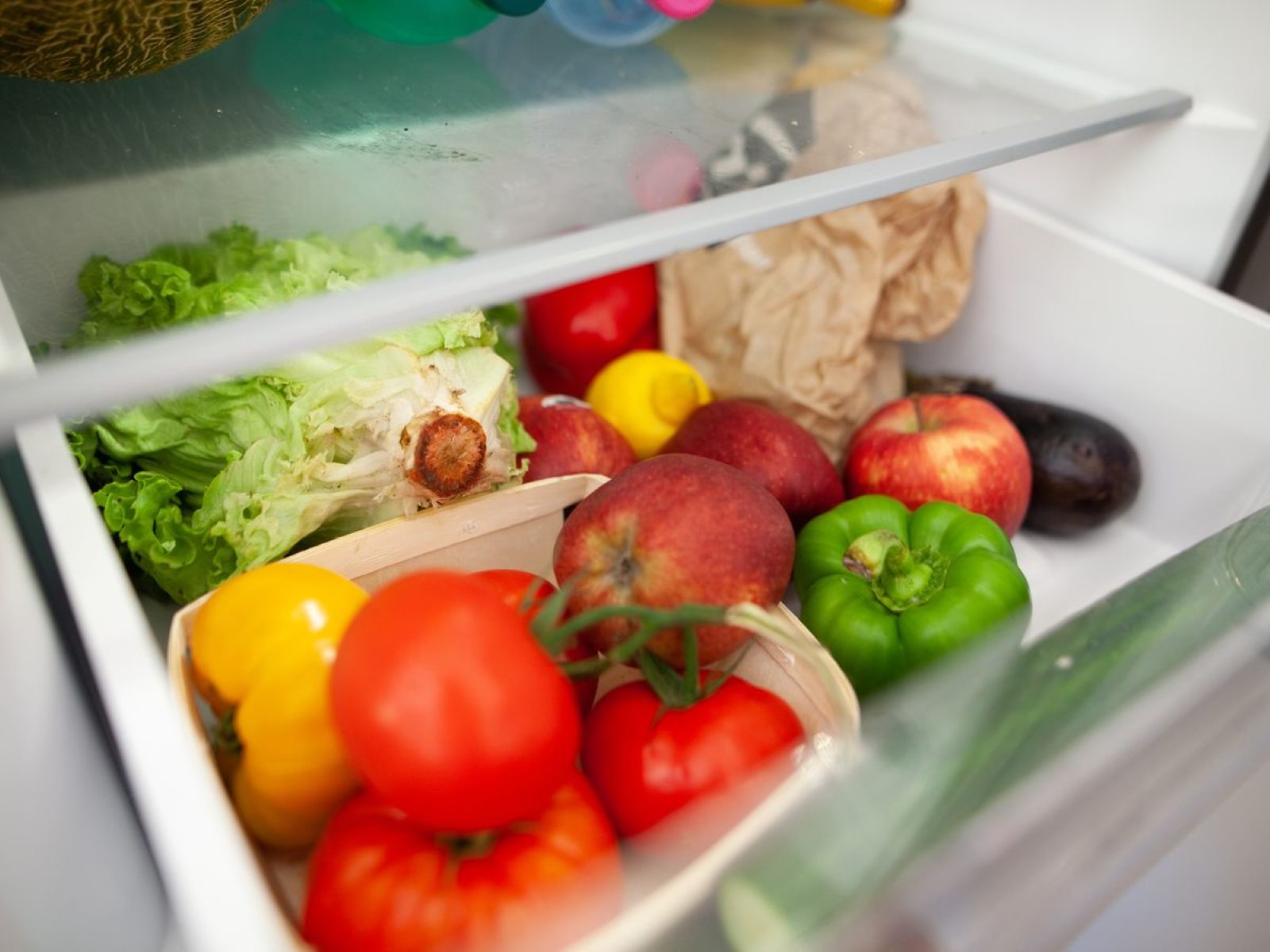


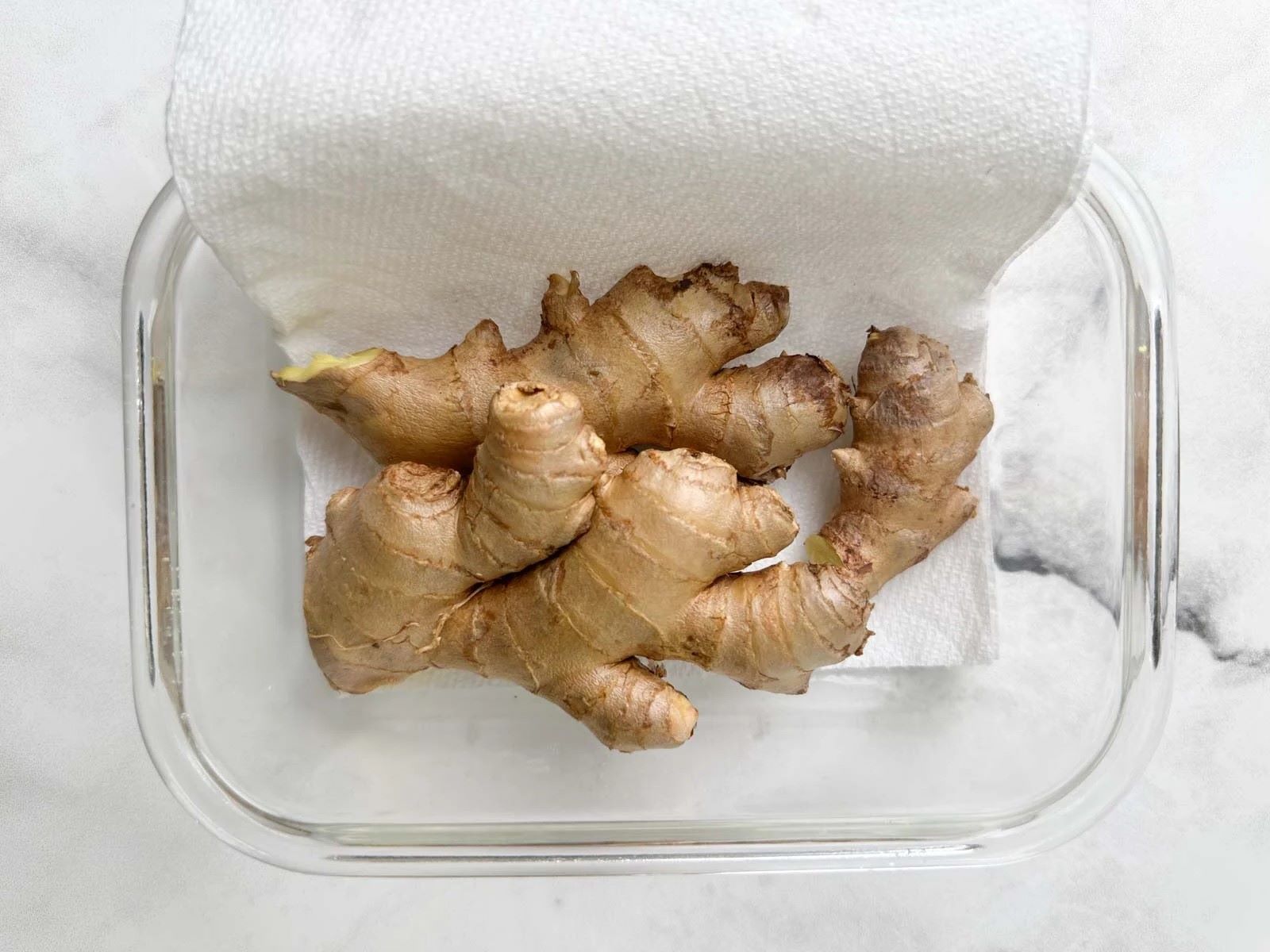
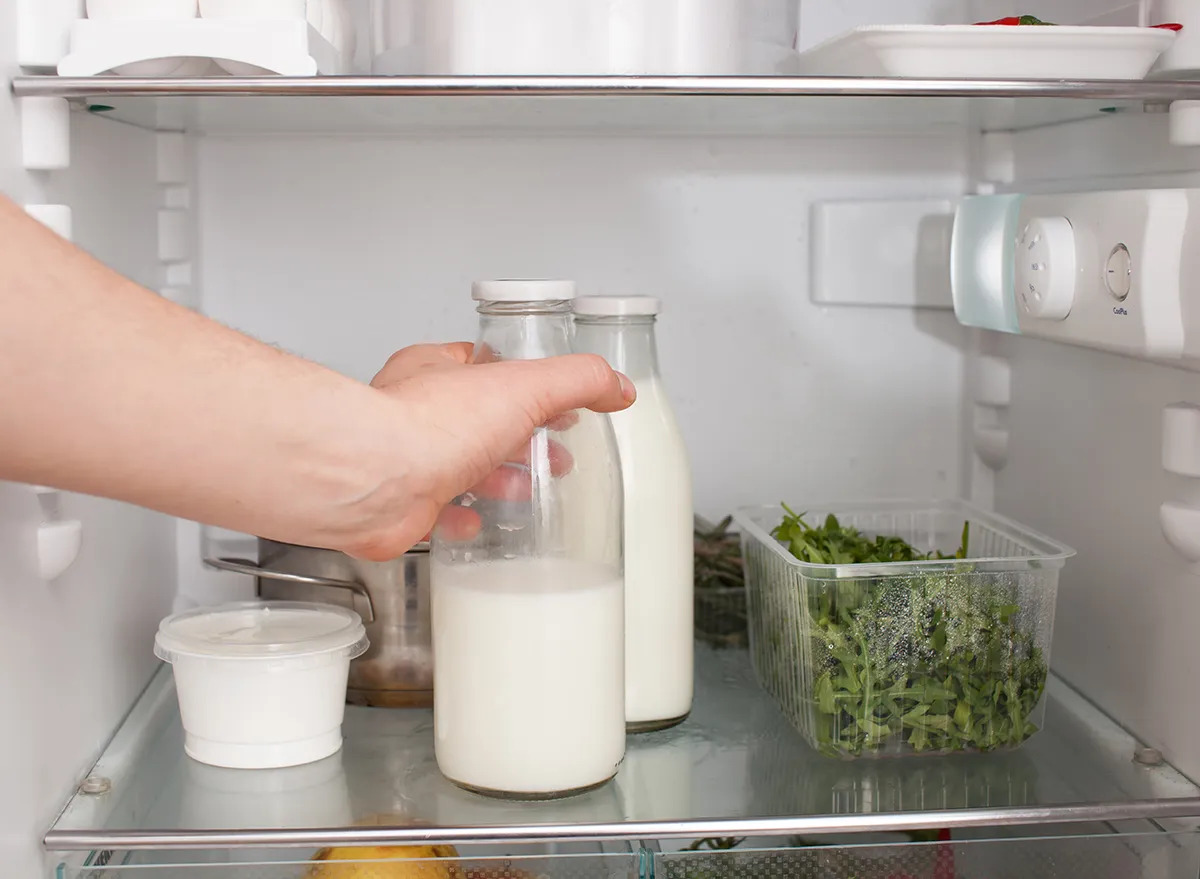
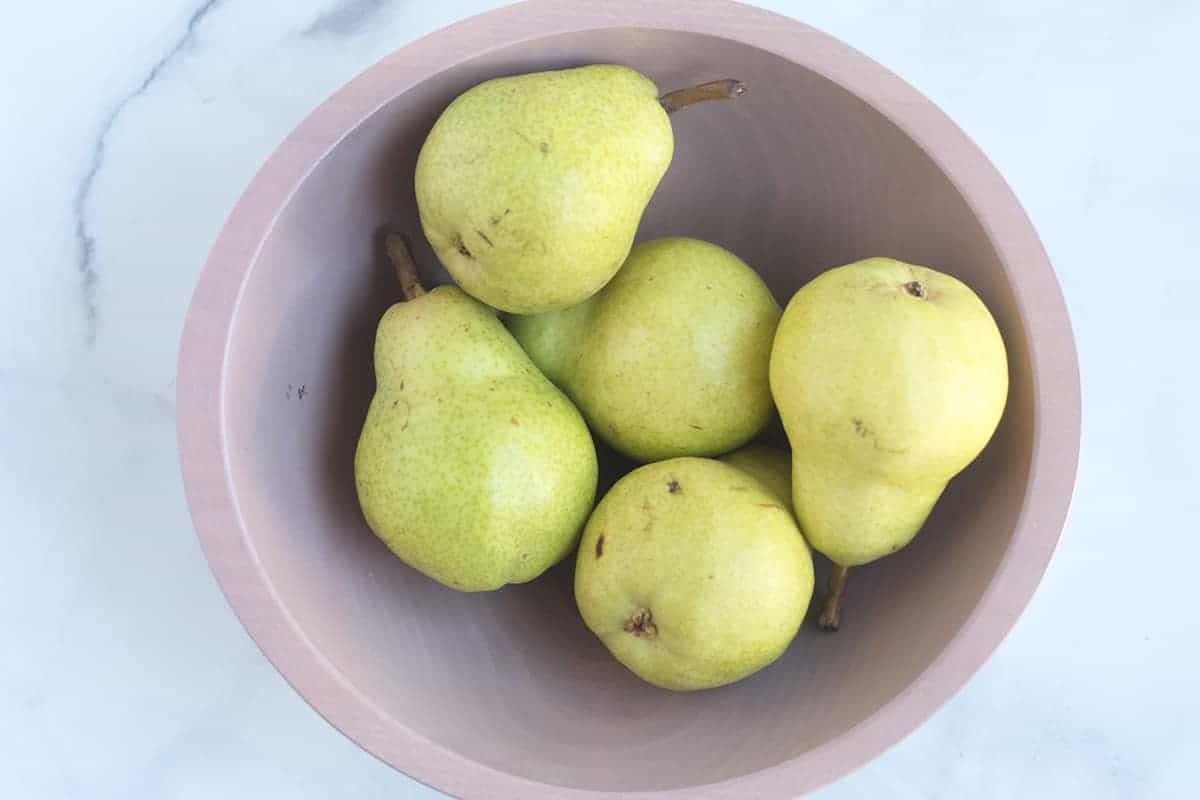

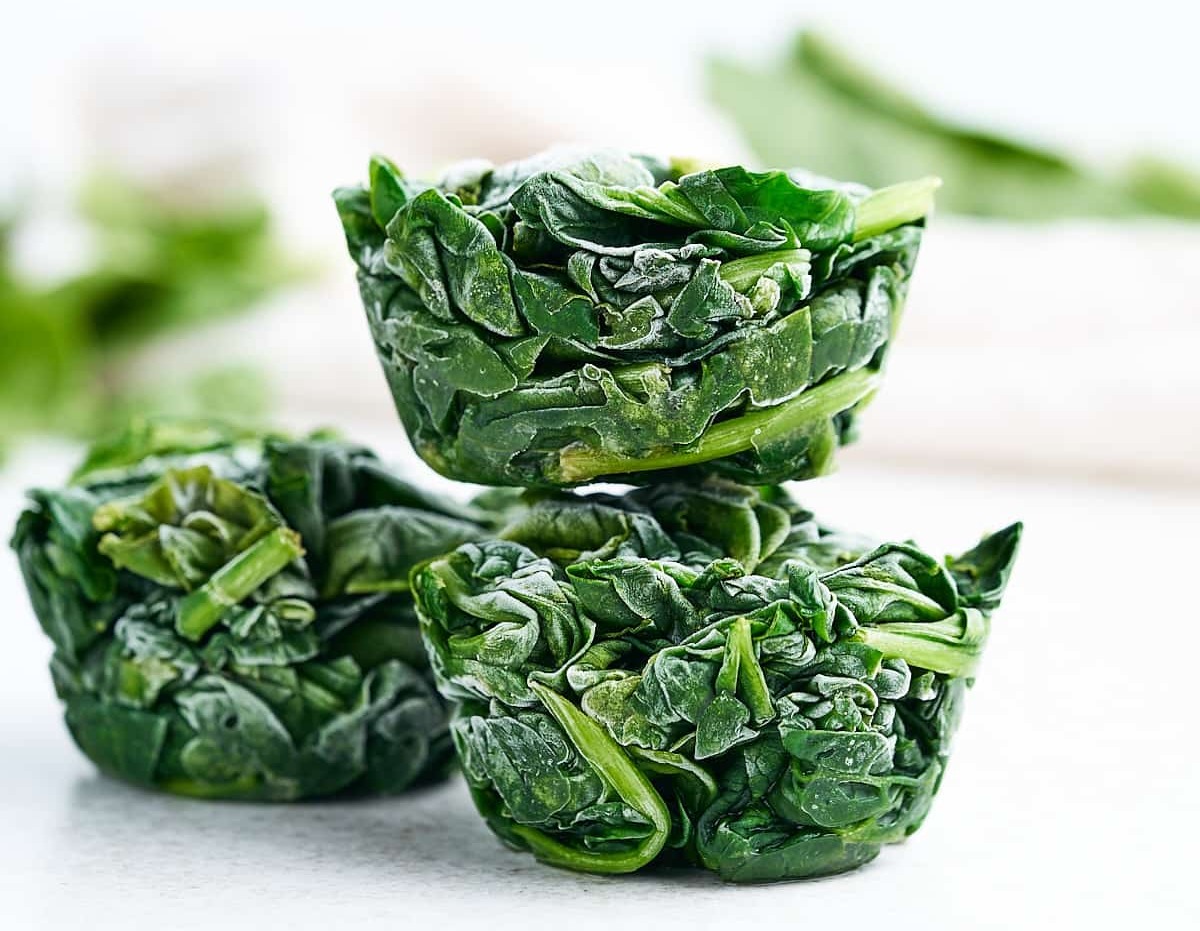



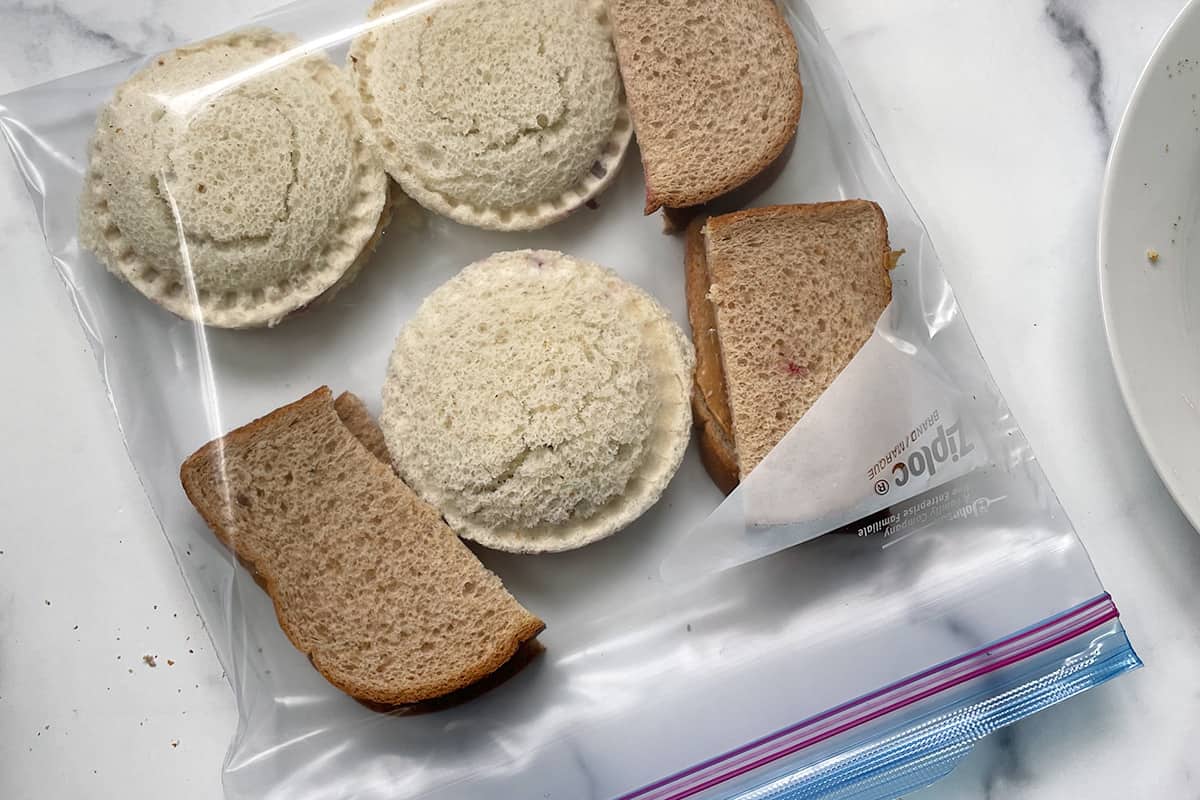
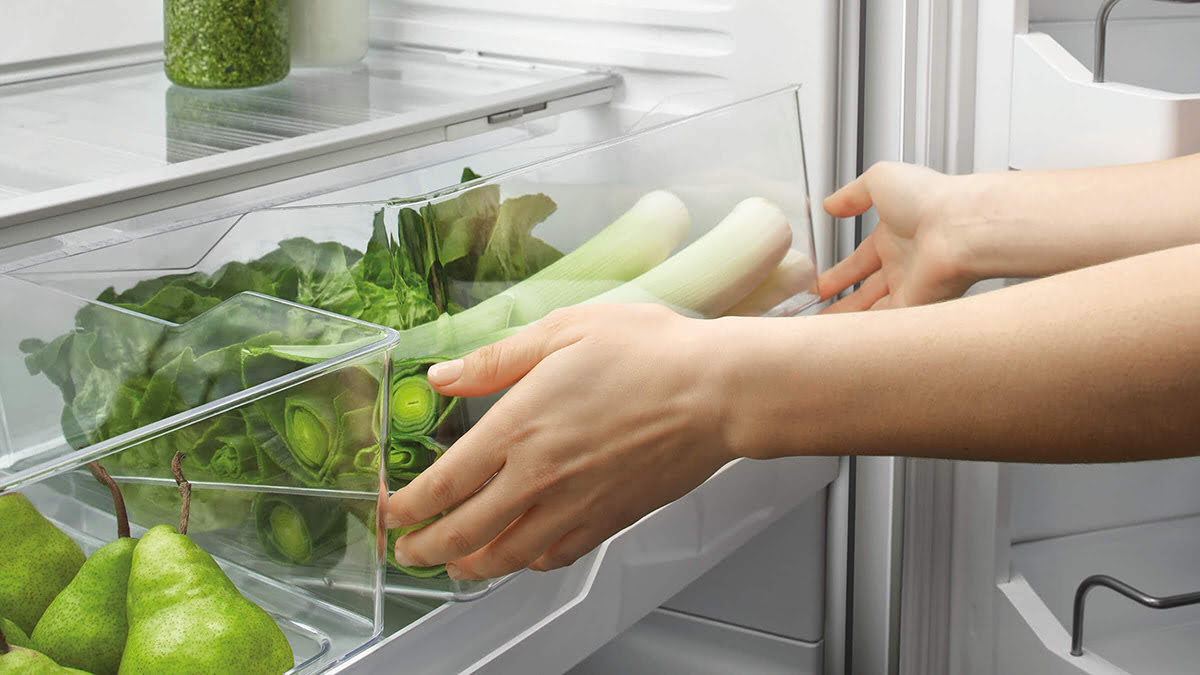

0 thoughts on “How To Store Kimchi Without Fridge”